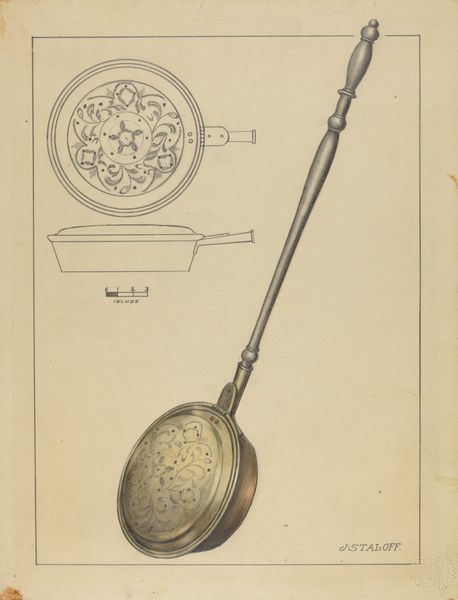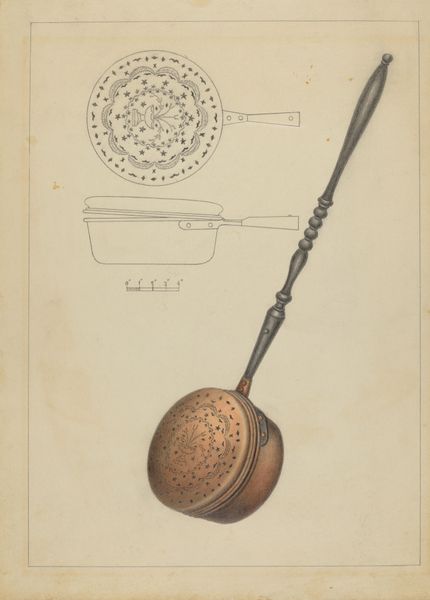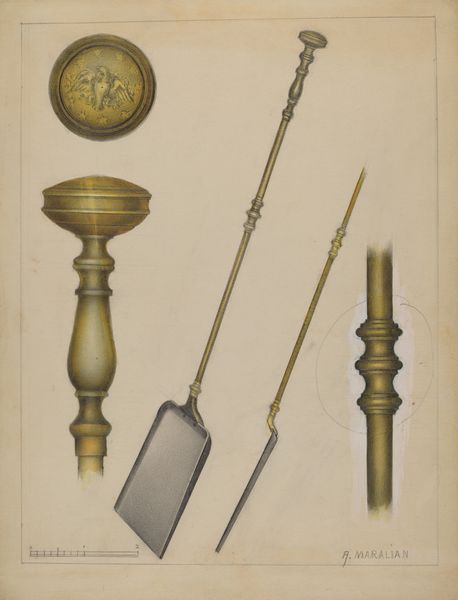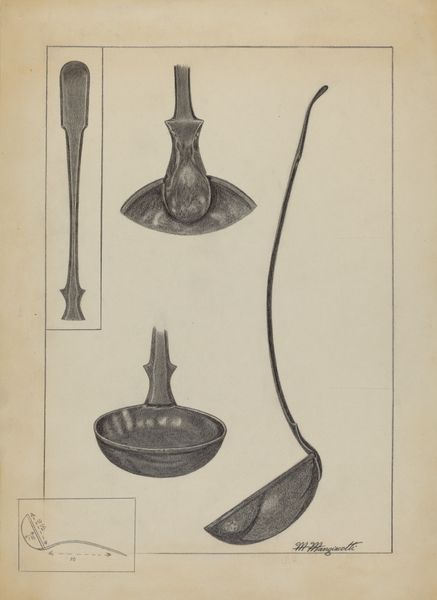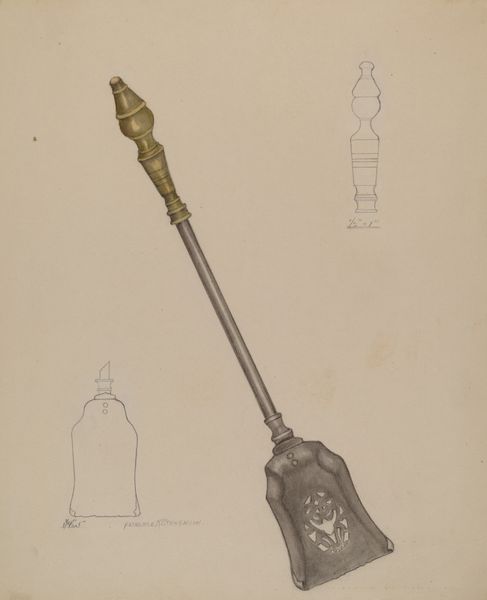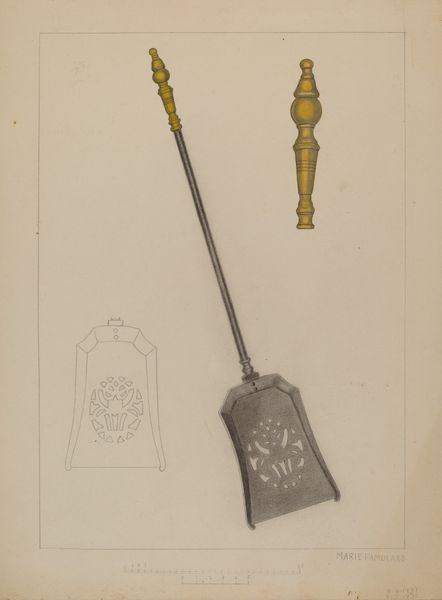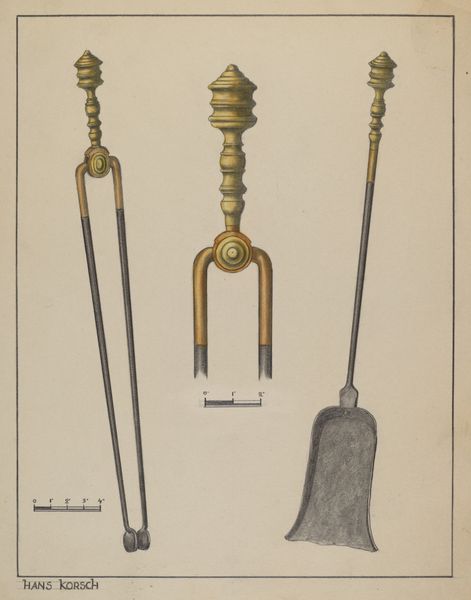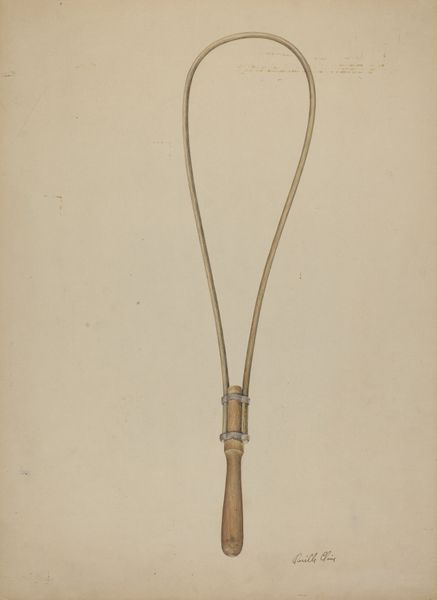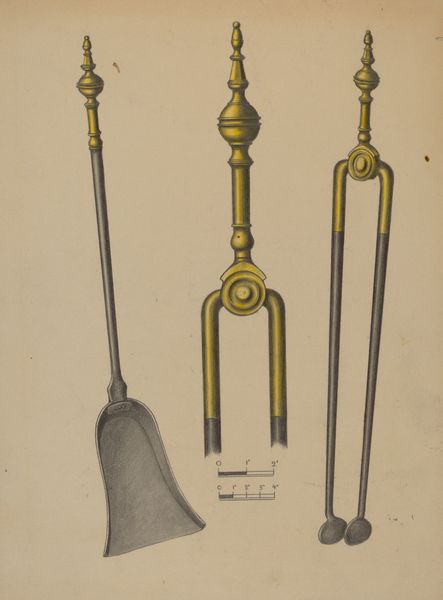
drawing, coloured-pencil
#
drawing
#
coloured-pencil
#
coloured pencil
#
decorative-art
#
watercolor
Dimensions: overall: 29 x 22.6 cm (11 7/16 x 8 7/8 in.)
Copyright: National Gallery of Art: CC0 1.0
Editor: This drawing, titled "Chatelaine," dates to around 1936 and is by Sylvia Dezon. It's rendered in colored pencil and it depicts a collection of tools hanging from chains, and something about it strikes me as ornate, almost performative. What do you see in this piece? Curator: Well, from a materialist perspective, I see a fascinating tension between function and decoration. The chatelaine itself was a practical object, a way for women to carry essential tools. But Dezon's rendering, with its focus on detail and aesthetic arrangement, elevates it beyond mere utility. Consider the labor involved in both the original object's production and the drawing itself. What does that say about the role of women and craft? Editor: I hadn't considered the parallel between crafting the chatelaine and crafting the image of it. So, the image becomes a commentary on labor itself? Curator: Precisely. It asks us to think about the social context of the materials represented and the hands that fashioned them. Who would have worn this object, and what does its opulence signify about her status and the social structure? Also, are those watercolor marks deliberate in blurring lines? Editor: It's interesting how something initially perceived as purely decorative reveals so much about production and social class when viewed through that lens. It makes me think differently about how even the simplest objects can tell complex stories. Curator: Exactly. The materiality here challenges that old binary that places "fine art" above design or craft objects like these, blurring those lines and pushing us to question how objects mediate our lived experience and social relations. Editor: I'll definitely look at decorative art pieces differently now! Thanks!
Comments
No comments
Be the first to comment and join the conversation on the ultimate creative platform.
